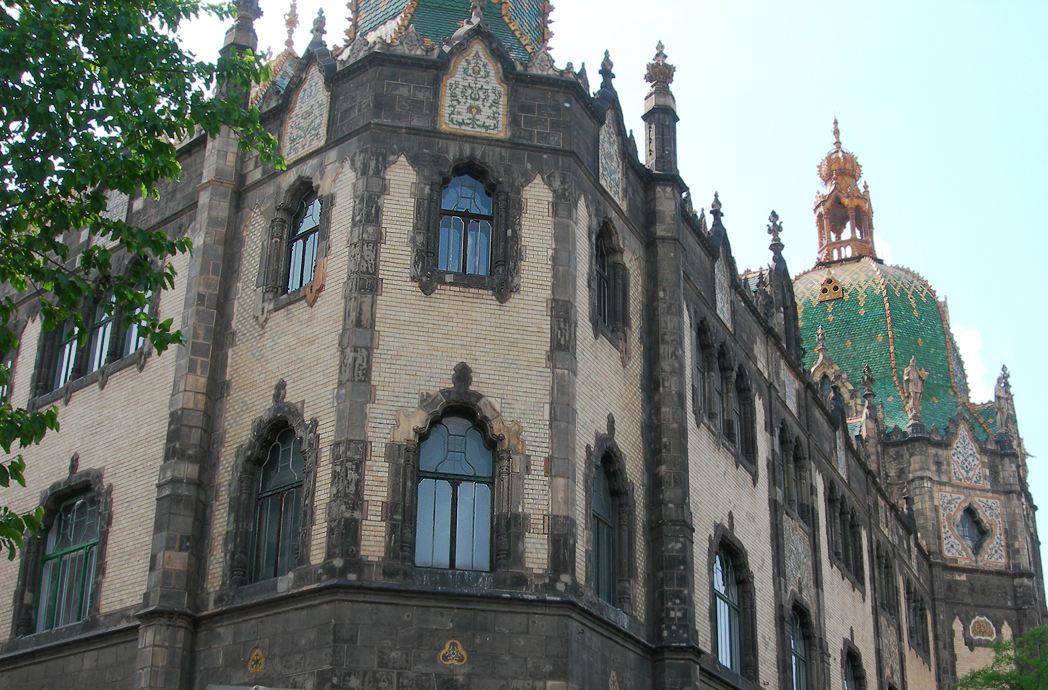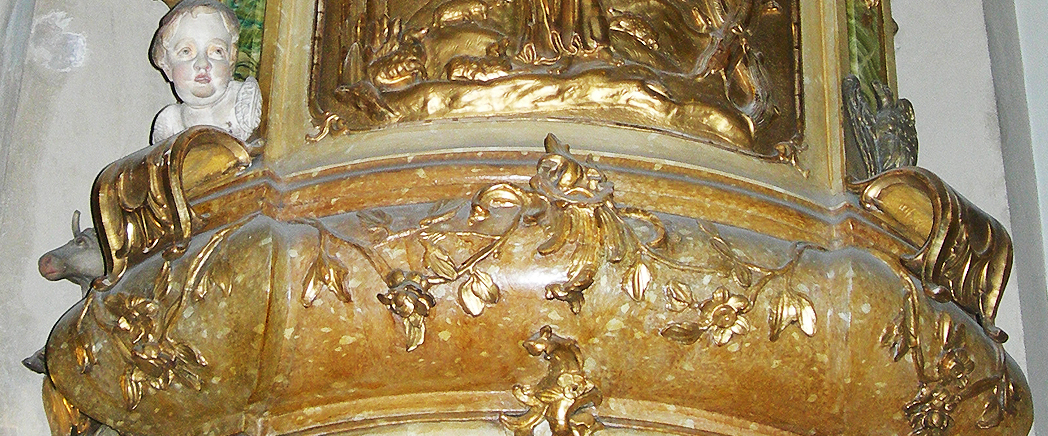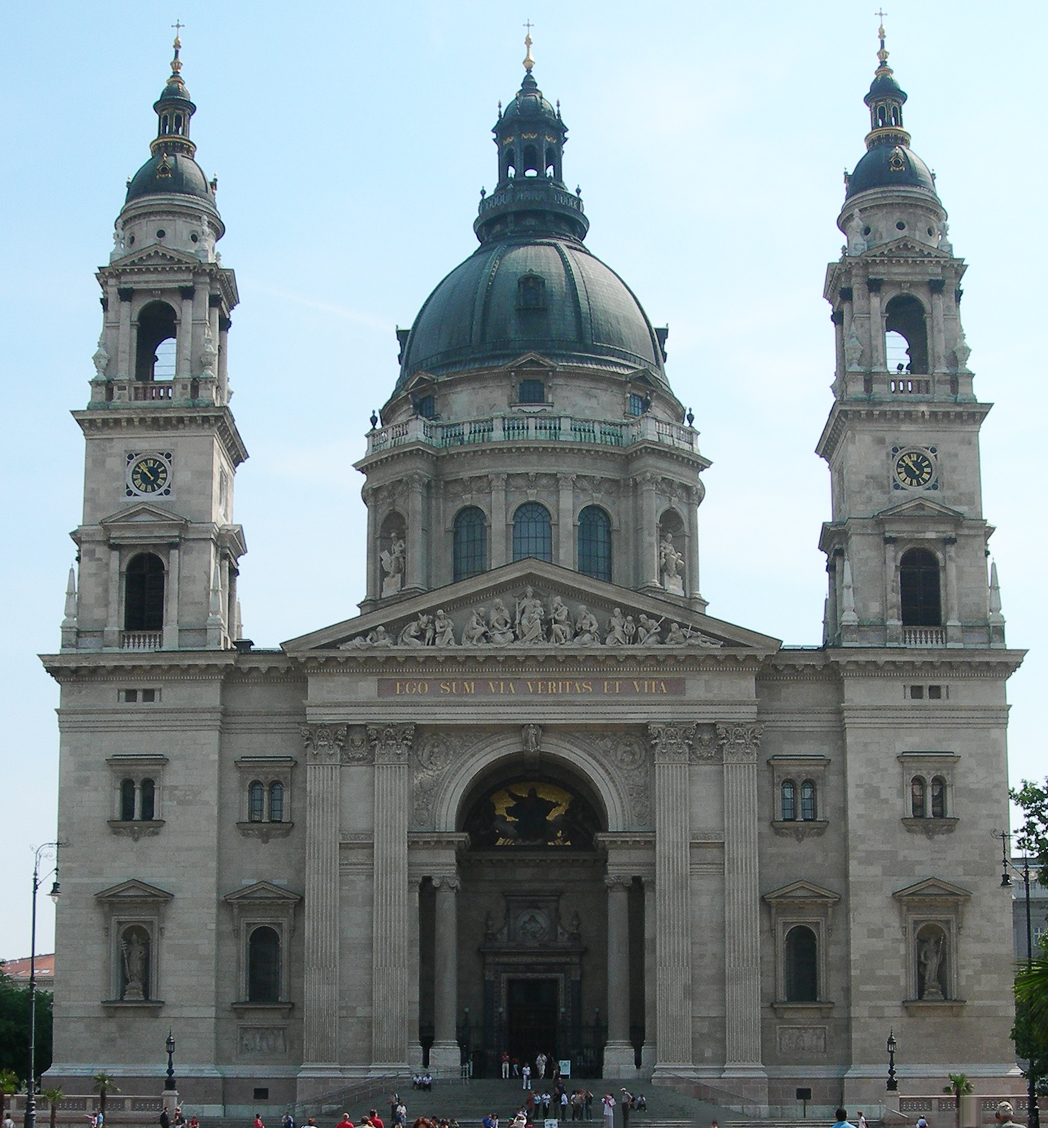|
|
 |
|
House of
Terror Museum |
 |
|
 |
|
|
|
1-4 |
House of
Terror Museum
The Neo-Renaissance museum building designed by Adolf
Feszty in 1880 contains exhibits related to the fascist
and communist dictatorial regimes in 20th century. The
museum's pamphlet says: "It was truly a house of
terror. In 1944, during the gruesome domination of the
Hungarian Arrow Cross Party, this building, known as the
"House of Loyalty" was the party headquarters
of the Hungarian Nazis. Then between 1945 and 1956, the
notorious communist terror organizations, the ÁVO and
its successor, the ÁVH, took up residence here. 60 Andrássy
Boulevard has become the house of terror and dread." |
|
2-4 |
Memorial board at House
of Terror Museum dedicated to 1956 uprising victims. |
|
 |
|
Budapest
Palace of Arts - Ludwig Museum |
 |
|
 |
|
|
 |
|
Budapest
Palace of Arts - Ludwig Museum, focuses on the last fifty years of modern
art in general and on the last ten years of modern
Hungarian art in particular. The museum displays the
collection of Peter and Irene Ludwig. Peter Ludwig
(1925-1996) was a millionaire
chocolate manufacturer from Aachen, a connoisseur and a
prominent patron of arts. |
 |
|
|
 |
|
|
|
1-2 |
Budapest
Palace of Arts - Ludwig Museum. |
|
3-4 |
A
Ziggurat, a
staircase-stepped shaped temple tower, situated beside
the National Theatre. |
|
5 |
The Műcsarnok
(Art hall or Kunsthalle) was founded in 1877 on the
initiative of the Hungarian National Fine Arts
Association. |
|
6-7 |
Buda Castle
District. |
|
|
|
|
|
 |
|
Museum of Applied Arts |
 |
|
 |
|
This Hungarian
Art Nouveau building, 1893-1896,
is
designed by Ödön Lechner and Gyula Pártos |
 |
|
|
  |
|
|
 |
|
|
 |
Exhibition of works by the Czech Art Nouveau printmaker
Alphonse Mucha (1860-1939)
entitled "In Praise of Women"
displays outstanding works from Mucha's oeuvre |
 |
|
|
|
|
 |
|
St Matthew's Church/The
Church of Our Lady |
 |
|
 |
 |
 |
|
St Matthew's Church aka the
Church of Our Lady
located in the heart of the Castle District,
was begun in 1255 and
was the first parish church in Budapest.
The name Matthew come from King Matthias, who ruled from
1458-1490. In 1541, when the Turks captured Buda, the Church of
Our Lady became a mosque. When the Turks were overthrown in
1686, local architects made attempts to restore the church in
the popular Baroque style of the era. The final major rebuilding
to the church's original splendor took place from 1895-1903, and
was lead by the architect Frigyes Schulek. The church received
its present Neo-Gothic style and was decorated with frescoes by
contemporary painters. Schulek added the diamond patterned roof
tiles and gargoyles. |
 |
|
|
|
 |
|
St Michael's
Church |
 |
|
 |
 |
 |
|
The
Baroque Church of St Michael
founded by the Dominica
Order in the 1700s. The church hosts the Baroque
Music Festival in autumn. |
 |
|
|
|
 |
|
|
|
|
|
1-2 |
Pest
Franciscan Church The current
Baroque building was erected in
1727-43. A plaque in the
church commemorates the
Hungarian composer Franz Liszt
(1811-1886), who lived in the
monastery for a time. |
|
3-4 |
The
Lutheran Church on Deák Square
(1799-1811) is the oldest
Lutheran church in Budapest
built by Mihály Pollack in
Neoclassic Empire style. |
|
 |
|
|
|
1 |
The
church of St Anne (1740-1762) designed by
Kristóf Hamon in
Baroque style and completed by
Mátyás
Nepauer. |
|
 |
|
|
 |
 |
 |
 |
 |
|
St Stephen's
Basilica
(1851-1905) is named in
honour of King Stephen the Saint (István I),
(1000–1038), the first Christian ruler of Hungary,
whose mummified right hand is housed in the
reliquary. The
neoclassical church's architects
were Jozsef Hild, Miklós Ybl and Józef Kauser. There
are similarities between St Stephen's Basilica and
St Pauls Cathedral in London. |
 |
|
|
|
1 |
"The
Holy Right"
is in the Chapel
of the "Holy Right Hand".
Every year the relic is taken in
a procession around the downtown
streets close to the basilica. |
|
 |
|
|
|
1-4 |
The
plaza in front of St
Stephen's Basilica. |
|
 |
|
The Buda Castle district |
 |
|
 |
|
|
|
|
|
|
1-4 |
Statues and Fountains in the Buda Castle district. |
|
 |
|
|
|
|
|
1-4 |
The
Fishermen's Bastion,
built between 1895-1902, was designed by the
architect Frigyes Schulek in Neo-Gothic style. The
Bastion is named after the fishermen's guild.
According to customs in the Middle Ages this guild
was in charge of defending this part of the castle
wall. The seven towers symbolize the seven
chieftains, who conquered the land for the
Hungarians. The equestrian statue depicts the first
king, St Stephen. |
|
5-6 |
King Saint Stephen of
Hungary,
1926, by Alajos Stróbl. |
|
 |
|
Budapest’s
Heroes’ Square |
 |
|
 |
|
|
|
|
|
|
1-6 |
Budapest’s
Heroes’ Square
stands in honor and memory of the great leaders in
Hungary’s history. Inside the niches of the two
semi-circles that make up the monument are statues
of famous men of Hungarian history, such as kings,
governors and King Stephen I, who brought
Christianity to the country. Atop the semi-circles
are symbols of War and Peace, Work and Welfare and
Knowledge and Glory.
The centerpiece of the square is
the Millennium Monument or Millennial Column, built
in 1896 to commemorate the 1000th anniversary of the
Magyar conquest. It is
topped with a statue of the Archangel Gabriel, meant
to be a symbol of the Roman Catholic Church. Pope
John Paul II preached at the Heroes' Square in 1991. Around the base of the
monument are a number of equestrian statues
honouring Árpád (c. 845.-c. 907) and the seven
chieftains of the Hungarian tribe, who settled their
people in the area now known as Hungary. In front of
the column is the Monument of National Heroes, also
known as the Tomb of the Unknown Soldiers, a tribute
to Hungary’s nameless heroes of war. |
|
 |
|
|
|
1-3 |
Budapest's
Freedom Square/Szabadság tér
In 1848 and 1849 many Hungarian freedom fighters
were executed at this location. In the very center
of Freedom Square is one of the city's few remaining
monuments to the Soviets. The monument with a star
on the top remains as a reminder of the Red Army
troops who liberated Budapest in 1944-45. |
|
4 |
Ferenc Deák de Kehida
(1803-1876), Hungarian statesman and Minister of
Justice. |
|
 |
|
|
|
1 |
"Lock
Happiness". |
|
2 |
Statue of Elizabeth of Bavaria (1837-1898) Empress of Austria and Queen of Hungary as spouse of Emperor Francis Joseph I. In the background the Elizabeth Bridge named after her. |
|
3-4 |
Statue of the
Hungarian writer and statesman József Eötvös
(1813-1871). |
|
 |
|
1 |
Bust of Salamon Ferencz
(1825-1892),
Hungarian historian, translator and critic. |
|
2 |
Statue of the
English poet and playwright William Shakespeare
(1564-1616) in front of Hotel InterContinental,
executed by Andor Meszaros in 1960 - a
replica of the original in front of Ballarat Civic
Hall, Australia. |
|
3-4 |
Memorial of
Prime Minister Imre Nagy
on Vértanúk tere (Martyrs' square). |
|
5 |
The Gellert monument Gellert Hill in the Buda district, designed by Gyula Jankovits and erected in 1904 in honour of the 11th century bishop St Gellért who converted the Magyars to Christianity. According to legends Gellert was put to death at this spot by pagans. In a barrel he was rolled down the Hill and then thrown into the Danube. |
|
|
|
|
 |
|
|
|
|
|
1-2 |
Monument of the
Hungarian poet and dramatist Mihály Vörösmarty
(1800-1855) considered by his contemporaries to be a
romanticist. Vörösmarty is best known for his
national epics, noted for their beautiful language,
including "Zalan's Flight" (1825), "Erlan" (1825)
and "Two Neighboring Castles" (1831). The monument,
executed by Eduard Telcs and Ede Kallós,
was erected in 1908. The poet is surrounded by
figures representing various classes of society,
including a farmer and peasant girl, people in
traditional Magyar dress, a student and a worker
with his wife and young son. |
|
3 |
Water fountain
with an obelisk,
the plaza in front of
St Stephen's Basilica. |
|
 |
.jpg) |
|
|
 |
|
|
 |
|
|
|
|
|
1-2 |
The Chain Bridge
(1839-1850) designed by the English engineer T.W. Clark.
It was the first bridge to span the Danube connecting
the two halves of the cities Buda and Pest. |
|
3 |
The Liberty Bridge inaugurated in 1896 by Franz Joseph, Emperor of Austria
(1848-1916) and King of Hungary (1867-1916), who in 1854
married Elisabeth of Bavaria in St Augustine's Church
in Vienna. At the top of the two pillars is the
mythological Turul bird. In "The Legend of the
Turul Hawk" it says: "The Turul is a giant
mythical falcon, a messenger of god in Hungarian
mythology, who sits on top of the tree of life along
with the other spirits of unborn children in the form of
birds." The Legend tells the story handed down
through generations about the origin of the dynasty and
the event of unification. |
|
 |
|
|
|
1-2 |
Lagymanyosi Bridge
(1992-1995) designed by Tibor Sigrai is the most
southerly Danube bridge named after the south Buda
district of Lágymányos. |
|
3 |
The
Margaret Bridge
(1872-1876) was planned by the French engineer Ernest
Gouin and built by his construction company Maison Èmile
Gouin. The engineer in charge was Èmile Nouguier, who
was famous for co-designing the Eiffel Tower in Paris.
The bridge lead up to Margret Island (aka Rabbits
Island) in the middle of the Danube river. |
|
 |
|
|
|
1 |
The yellow tram is a
distinctive feature of Budapest’s urban landscape. |
|
2 |
The
Budapest Metro
is the second-oldest underground metro system in the world
dating back to 1896. |
|
3 |
Buda Castle funicular
railway. |
|
 |
|
|
|
1-3 |
The
Elisabeth Bridge
(1897-1903) is named after Queen Elisabeth (1837-1898),
queen and empress of Austria-Hungary, who was
assassinated in 1898 in Geneva by an Italian anarchist. |
|
4 |
Petofi Bridge (1933-1937) named after the Hungarian poet and revolutionist Sándor
Petőfi (1823-1949). |
|
 |
|
|